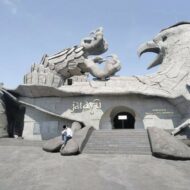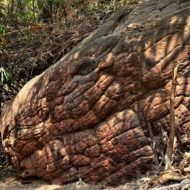Aachen Cathedral ( Aachener Dom ) is located in Aachen, state of North Rhine-Westphalia, Germany.
The cathedral was built between 793 and 813 by the order of Charlemagne.
The most famous church treasures in Europe are stored in the cathedral treasure vault. They include treasures of sacred culture from late antiquity, the Carolingian, Ottonian, Staufferian and Gothic periods, some of which are among the greatest works of art of their time. The relics kept here – the four largest sanctuaries – gave the cathedral the opportunity to become one of the most important objects of Christian pilgrimage. When Charlemagne in 814 died, the cathedral became his eternal resting place. The ancient sarcophagus is kept today in the central choir hall.
It is sometimes called the glass palace because the walls of this part of the building are almost entirely covered with stained glass. Here until the 16th century. All German emperors were crowned, many are buried here, including Charlemagne.
More than a thousand years old, Aachen Cathedral is considered a symbol of the city, in 1978 it was included on the UNESCO World Heritage list.
Access : Coordinates: 50.77475, 6.083922 /
Highlights :
- A unique element in the interior of the Aachen cathedral is the Carolingian Palatinate Chapel with the bronze choir screens, which are among the most important works from the 8th and 9th century Aachen workshops.
- The church contains the grave of Otto III. There is also a scale model of the fountain of St. Peter’s. Aachen Cathedral has several Carolingian bronze doors, of which the Wolf’s Door in the main entrance is the most important.
Go next : Explore Aachen , a town in North Rhine-Westphalia, Germany. It is located in the west of the state, on the borders of Germany with Belgium and the Netherlands.















